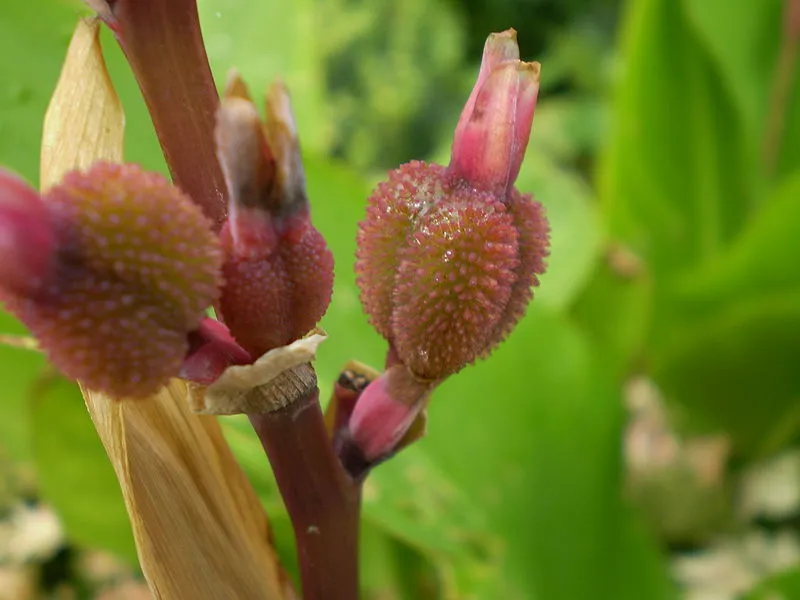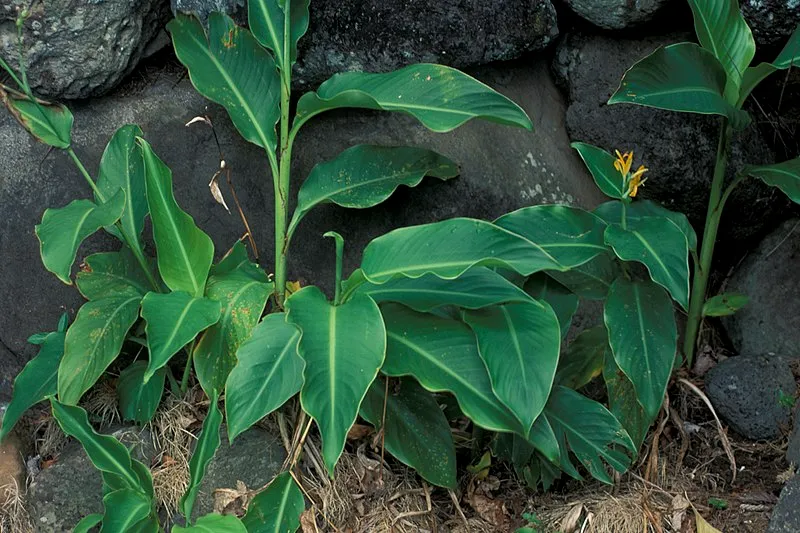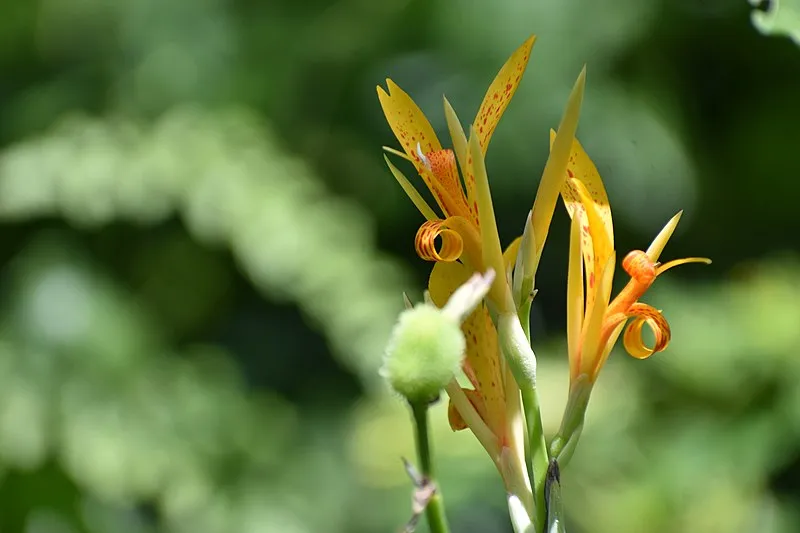The so-called Indian canes are herbaceous plants, erect, robust, with a rhizomatuberous, thick and unbranched stems. They have alternate leaves, spirally arranged, convolute in the vernation, large, linear to oblanceolate, with sheathing base and entire margins; the lamina has prominent midrib and numerous parallel lateral nerves.



▶ Inflorescence is a raceme or terminal panicle, with 1-2 bisexual, very asymmetrical, bracteate, showy, bracteate flowers. The calyx has 3 sepals, green or purplish, free, persistent in the fruit, spirally arranged; the corolla has 3 petals, one smaller than the other two, usually colored, united at the base together with the stamens and staminodes forming a tube that can be short or long.

▶ Credits: SergioTorresC – [Image of Public Domain]
≕ I invite you to stay tuned and read my next contribution ≔
The stamens and staminodes are arranged in 2 whorls, the outer one with 2 (-3) petaloid staminodes, usually red or yellow, of different shape and size, and the inner one with 1 recurved staminode, called labellum, usually narrower than the other two, and a fertile stamen with the filament of petaloid aspect and the unilocular anther with two pollen sacs, with longitudinal dehiscence; the ovary is inferoid, trilocular, with 20-50 ovules in each locule; the style is flattened, petaloid in appearance.
Its fruit is a trivalent, dehiscent, verrucous or spiny capsule, containing numerous hard, globose seeds. The genus Canna is the only genus of the family Cannaceae, and comprises 10-12 species distributed throughout the tropics and subtropics of the New World.

Cannaceae are native to tropical and subtropical regions of the Americas, distributed from sea level to mountain slopes below 3,000 meters above sea level. One species (Canna indica) has naturalized throughout the tropical and subtropical regions of Asia and Africa.